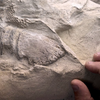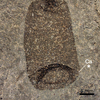A New Origin for Dragon Folklore?

An Edo period painting of a dragon from Japan.
At the bedrock of folklore studies is one underlying question: why is it that ancient peoples, separated by continents and millenia, generated similar stories independently? Let’s take the mythological dragon for example: how is this creature able to rear its head in both ancient China and Britain? Like other creatures of folklore, it’s usually thought that the fictitious dragons are the progeny of the real-life dinosaurs, that ancient peoples discovered their bones and built mythologies around them. A recent study suggests that dragon mythology may not have been generated from animal life alone, but from plants.
A study from 2020 out of Roanoke College suggests that dragons owe their origin to Carboniferous Period plants, specifically Lepidodendron, whose fossilized patterns resemble reptilian scales. Ulodendron may be able to account for the dragon’s eye, while still other plants and fronds possess a superficial resemblance to feathers. During the Carboniferous over 300 million years ago, these plants and others were concentrated along the equator–as Pangea broke up, these fossils were scattered across the world, which could account for the wide distribution of dragon mythology.

Lepidodendron from the Joggins Formation in Nova Scotia.
As a part of their research, the study’s authors compared 217 known fossil sites of the specific plant genera against cases of dragon folklore, finding that the two roughly align across the world. Britain has the highest correlation between stories and fossils, perhaps explaining the indelible place dragons maintain in British folklore. The authors specifically cite Worm Hill, supposedly formed by the Lambton Worm wrapping itself around a hill seven times, and its close proximity to a known fossil site. The Sockburn Worm’s poisonous and fiery breath could perhaps be accounted for by escaping gas produced by Carboniferous coal deposits.
The study is quick to concede that plant life is unlikely to account for the entirety of the dragon mythos, with dinosaur fossils also helping to build the mythology, but we now have a clearer picture of how these mythological creatures came about. Just as vampires may be the product of blood disorders like porphyria, folklore often is the product of real-life phenomenon, interpreted by a pre-scientific peoples into the realm of the legendary.
What do you think? See a resemblance? Check out this Lepidodendron fossil bark and compare it to dragon scales up close and personal!
(Find even more plant fossils here!)
Featured Product
Joe Frazier Boxing Glove
Cool Things!

Is “Paul is Dead” Dead?: Unpacking One Of Pop Culture’s Most Enduring Conspiracy Theories

Scientists Discover Hooves and Skin in Preserved Dinosaur "Mummies!"
A dinosaur discovery just in time for Halloween! In a new analysis of a group of fossils from Wyoming, Scientists have determined this group of fossils are dinosaur “mummies,” with preserved skin and even hooves.

Scientists Record a Bat Catching Birds Mid-Flight!
Bats, birds, screeches, oh my! In a reverse-Hitchcock twist, a new study reveals that a species of European bat catches and eats birds mid-flight.
Specimen Deep Dives

The House that Ruth Built: The Story of the Old Yankee Stadium

The Queen of the Skies: the Story of the Boeing 747

Old Ironsides: The USS Constitution and the Start of the U.S. Navy
Long Form Articles

The Artist Behind the Macintosh: Susan Kare and Apple Computers
While the two Steves, Jobs and Wozniak, are the most well known faces behind Apple computers, equally important to the products and culture of the company were those who crafted the experience of using their computers through design. The most notable of these visual architects was Susan Kare, a designer responsible for “humanizing” Macintosh computers.

Can I Lick It? Yes You Can!
Have you ever been unable to tell if a fossil was really a fossil, but you were too embarrassed to admit it? Have you ever wanted to lick a fossil just because, but you didn’t want to risk judgment from your peers? Well, good news! You can kill two birds with one stone! Licking a fossil can actually help you determine if it’s the real deal or just another rock.

Is It Legal To Own a Meteorite: How to Start Your Outer Space Collection!
Meteorites are some of the rarest geological specimens to be found on Earth. Of course, since these stones are not of our world, purchasing them can sometimes be a confusing process. Is it legal to own a meteorite? In short, yes! Read on for help starting your cosmic collection!


















